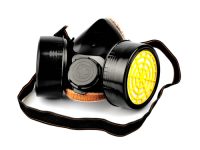Category: Chemicals
Today’s workplace uses thousands of chemicals, many of which are hazardous. The resources in this section will help guide you in the safe and legal identification, storage, transport, and use of these chemicals, and in making sure that your employees right to know how to be safe around such substances is provided, as required by law.
Got a few minutes to test your knowledge of HazCom requirements? Answer the questions below and then check your responses. Employers have four basic duties under the Hazard Communication standard. What are they? When must employees receive HazCom training? Who is responsible for training temps? The HazCom standard identifies four basic components that must be […]
Cleanup procedures for chemical spills depend on the size of the spill and the risks. Make sure employees understand cleanup rules. Even small spills of highly toxic or flammable substances can be hazardous. Large spills can cause serious injuries to employees and damage to your facility as well as have an environmental impact. Cleanup should […]
Even in small amounts, chemical spills and leaks can be dangerous. Train employees to respond quickly and effectively. Although there is no specific training requirement for general employee response to the accidental spill or leak of potentially hazardous chemicals, there are specific training requirements for workers who: Handle certain specified hazardous substances such as formaldehyde, […]
This week is Poison Prevention Week, which makes it the perfect occasion to hold a safety meeting on preventing poisoning on the job and at home. Unprotected exposure to many substances found in the workplace and in the home can lead to poisoning. What’s more it isn’t all that hard to be exposed, since these […]
Any time employees are working with hazardous materials, there is a risk of exposure. To prevent exposures, emphasize 5 key protective measures. 1. Knowledge Employees need to pay attention to safety training and apply what they learn on the job. When they come to a training session or safety meeting, they should be prepared to […]
HazCom featured in third place on OSHA’s top 10 violations for 2010. Two big HazCom issues are labels and MSDSs. Every year HazCom features somewhere on OSHA’s top 10 list. Violations can have a significant impact on employee safety, and citations can be costly. Many of the 7,000 HazCom violations cited this year were serious, […]
Yesterday, we discussed key safety requirements for flammable and combustible liquids. Today, we spotlight a disastrous accident that underlines the critical importance of those requirements. A few years back an explosion ripped through a solvent manufacturing plant in Iowa. The accident was caused by a static electrical spark resulting from inadequate electrical bonding and grounding […]
The presence of flammable and combustible liquids in the workplace greatly increases the risk of fire and explosion. Precautions like these can help prevent accidents. 1. Storage All storage must be in tanks or closed containers. The quantity of liquids allowed in manufacturing/production areas (outside of primary storage) is limited according to the liquid class and […]
Yesterday, we explained how to calculate PELs. Today, we talk about how to comply with them. To achieve compliance with PELs, OSHA says a facility must determine and then implement administrative or engineering controls whenever feasible. Engineering controls involve the use of: Exhaust and general ventilation Enclosure of the source of emissions Process and equipment […]
To protect workers from harmful exposures to air contaminants, you have to be able to calculate exposure limits accurately. Here is a review of the formulas used to calculate PELs. OSHA has developed 470 PELs (permissible exposure limits) for various forms of approximately 300 chemical substances. The PELs provide numeric standards that determine how long […]


